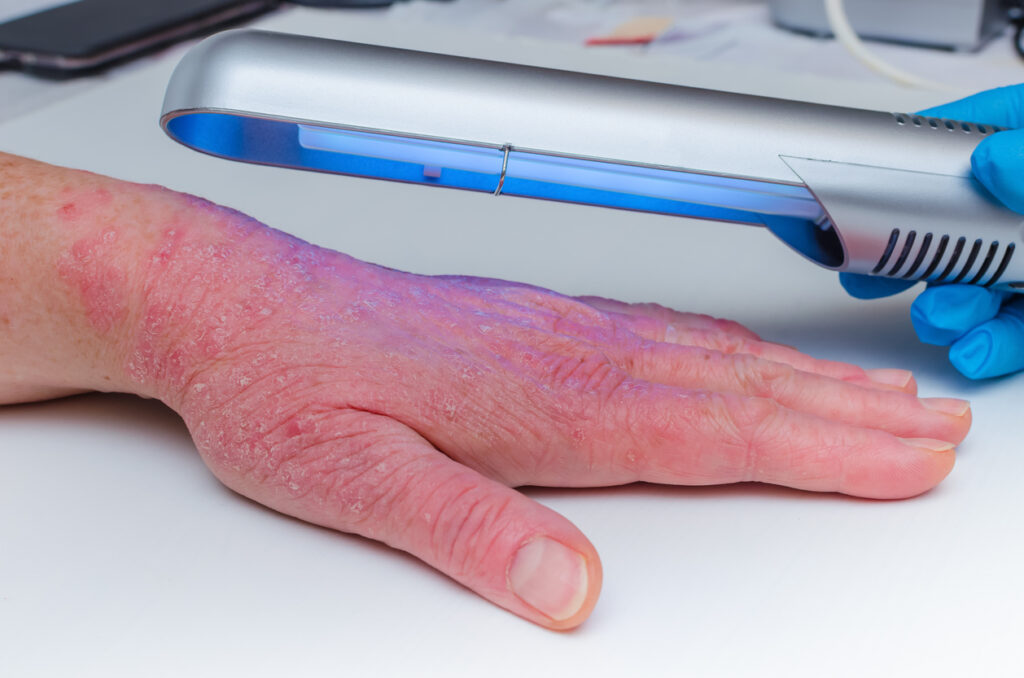Patients can treat their psoriasis as well at home using phototherapy devices as they can with narrowband ultraviolet B (nbUVB) phototherapy administered in the clinic, according to Results of the LITE study (Light Treatment Effectiveness study) in JAMA Dermatology.
Fully 60% of patients who followed the recommended light therapy course twice a week at home or in a clinic had clear or mostly clear skin after 12 weeks of treatment, but patients who received at-home treatment were more likely to adhere to the prescribed treatment and were able to do so more easily than getting treatment in a doctor’s office, which brings costs for both time and travel, the study found.
“Our research should influence clinical practice right away,” says lead author Joel Gelfand, MD, the James J. Leyden, M.D. Endowed Professor in Clinical Investigation in the Department of Dermatology at Penn and the Medical Director of Penn’s Psoriasis and Phototherapy Treatment Center in Philadelphia, PA, in a news release. “Many insurance companies cover at home phototherapy but make it very difficult to obtain coverage causing long delays when patients need treatment immediately. Insurance companies should make the approval process easier for this treatment, and dermatology providers should prescribe home phototherapy for management of psoriasis when medically appropriate and when preferred by their patients.”
The study included 783 people, ages 12 and older, who had plaque or guttate psoriasis. Participants’ psoriasis symptoms were assessed at regular visits with their dermatologists and then randomly assigned to receive 12 weeks of at-home nbUVB or in-clinic nbUVB treatment followed by a 12-week observation period.
Those who conducted phototherapy at home were provided with machines, taught how to use them, and given specific prescriptions based on the color of their skin and sensitivity to sunburn. After 12 weeks, 33% of home patients and 26% of in-office patients showed clear or almost clear skin. Among both at-home and in-clinic patients who were able to maintain the twice-per-week treatments, about 60% achieved clear or almost clear skin.
Patients receiving home phototherapy were more than three times more likely than those going to a clinic to be able to maintain the recommended treatment frequency. None of the participants had to discontinue their participation in the study due to adverse side effects.
“Medications to treat psoriasis have a risk of side effects including increased risk of infection. Some patients prefer medication-free treatment,” says Dr. Gelfand, who is a member of TDD’s Editorial Advisory Board. “Our study is important because it increases the options available to both clinicians and patients and gives patients the power to pursue treatment that best fits their needs and preferences.”


